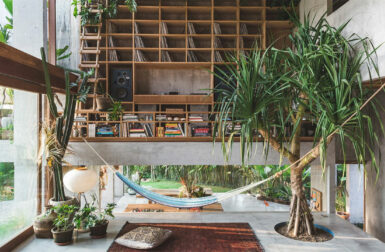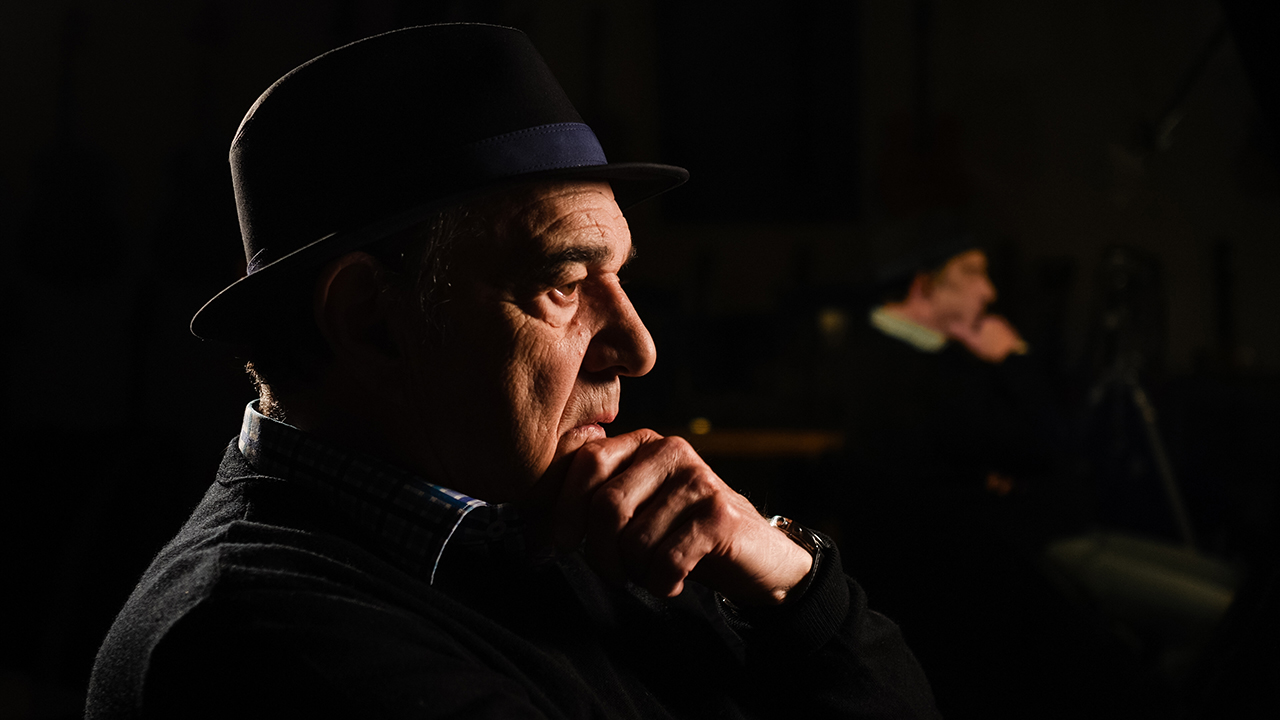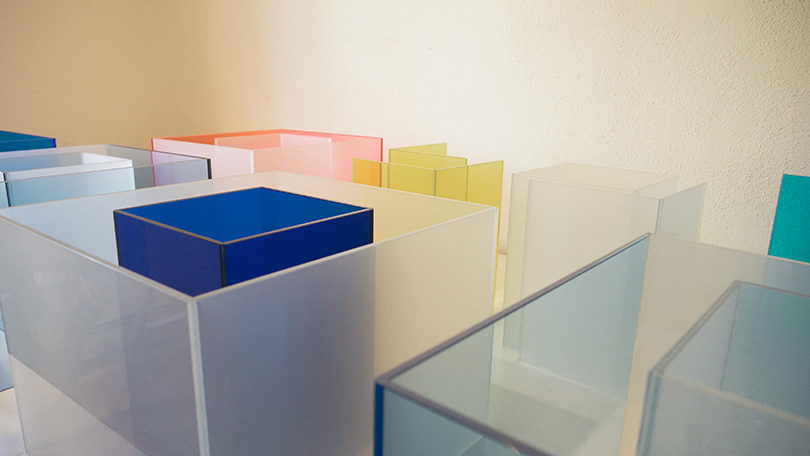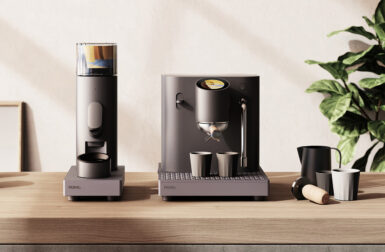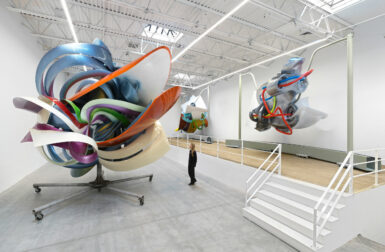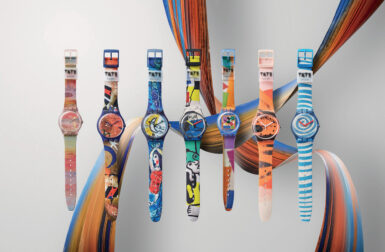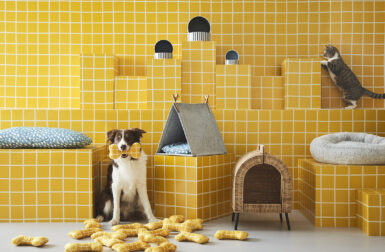At NeoCon 2018, leading commercial flooring surfaces manufacturer Mannington Commercial debuted their first artist collaboration with renowned installation artist Gabriel Dawe, and together they released The Moiré Collection. At this year’s NeoCon, Mannington is introducing another collaborative design collection, this time in partnership with master of light and surface Larry Bell, known for experimenting with the nature of surface as it relates to space. The Hocus Collection will continue to drive Mannington’s goal of championing creativity and delivering advanced performance to commercial spaces sustainably.
Since its founding in 1915, Mannington Commercial has had one goal in mind – to be the best people to do business with in the flooring industry. Their full range of beautifully designed flooring products have been designed to work together seamlessly to inspire your project, fit the needs of your space, and do it all with sustainability in mind. Their passion for crafting is present in every expectation that’s been exceeded, every project that’s been enhanced by their product, and in the level of attention and care paid to your creative vision.
Floor covering isn’t usually a textile one immediately thinks of when entertaining the idea of exploring space, light, shadow, and transparency as Bell does within his art studies, making The Hocus Collection a real experiment. How did Mannington and Bell go about combining two drastically different mediums to create The Hocus Collection?
Roby Isaac, Vice President, Commercial Design shared how the starting point for Mannington’s collaboration with Larry Bell came about, rather fortuitously as it turns out. “We were first drawn to Larry’s Standing Walls work. Gabriel Dawe, a wonderful artist we collaborated with on our Moiré Collection, knows Larry and introduced us. We met with Larry in his Taos studio and experienced several of his pieces. We talked about how he viewed his work. Then we had the amazing experience of walking with Larry through his exhibit Hocus, Focus and 12 at the Harwood Museum of Art. That show had a variety of Larry’s work, including Standing Walls installations and cube sculptures. We took photos and just moved around the pieces and really tried to capture the reflection of light on the glass—how, as an observer, we would take that in. Then we met with Larry again out in his Venice Beach studio to go over initial ideas, and that’s how we started the whole design process.”
“The hardest thing for us was to choose what to work on, because Larry has so many pieces that we were inspired by. But we just kept coming back to his Standing Walls installations, and the Maquettes, which are his models for larger glass sculptures.,” Isaac said.
Bell admits he was a bit bewildered when first approached about the collaboration, saying he’s not a designer of things. But after learning that his work would be interpreted into a collection of floor coverings, he was in. He said, “I respect the integrity of the company and the people that are involved in it. I feel quite blessed to have the opportunity to do this.”
“The idea that my work might be able to be used for things other than just to look at, in that it could now be walked on, I found that rather interesting. Mannington Commercial’s industry is about working with materials that provide comfort and beauty to people’s lives. And I’m not sure what my work provides to people’s lives. It doesn’t have so much to do with comfort and beauty. It has to do with an internal search for things, so the evidence is what it is. And how it’s interpreted is the rightful interpretation of those who participate.”
“‘Hocus,’ to me, means something magical and improbable. I’ve never done anything like this before. Images of things that I’ve done were played with and changed and combined with different textures and different surfaces, and the collection that came from it all is beautiful. The patterns and the colors are just really amazing, and they all work well together. It’s added another dimension to my media that I had not realized was possible.,” Bell declared.
He went on to say, “I always thought, no matter what kind of materials I used, that my media was the interface of light and surface. All we really see is the light off of surfaces. Everything has a different quality to the surface, and the way the light comes off of the different quality of surface tells us what it is.”
So how did Bell and Mannington go about translating the process of Larry’s work into the end product – a flooring collection? Isaac says, “For the style Observer, we went back to the experience of being in front of his glass installations and sculptures. As a viewer, you can immediately see the relationship between light, glass, and the play of right angles. There’s also a purity of color that we wanted to explore. To create the pattern we began layering cubes on top of each other, which led to a lot of really cool overlapping of values and shading. We raised the texture in certain areas to add to the sense of dimension, and we also used a unique yarn in all of the styles that has a special luster to it, which subtly talks to the idea of light.”
For the Maquette style, Mannington referenced the prototypes of Larry’s maquettes as inspiration by turning the elements of the 3D cubes into a super graphic 2D form with a faded effect to mimic his vacuum process. The Transference style is a small scale, textural pattern that attempts to recreate the characteristics of glass. It’s very versatile and can be used in many applications, a style that’s soft yet full of depth.
“In many of Larry’s pieces there’s a purity of color that we knew had to be part of the product story. Since glass and yarn are disparate as creative mediums, we used color to be the bridge to connect the two. Our intent was to maintain a sense of softness while developing colors. We did this by focusing on a lightness of value and use of nuanced colors throughout the palette. This approach helped us tie back to that feeling of seeing complex colors in multiple values when standing in front of one of Larry’s glass studies.,” Isaac shared.
Around 60 years ago, Bell wanted to incorporate a piece of glass into a sculpture he was creating. He realized that what he was really after was a piece of glass with a coating, similar to the silver compound that’s on one side of a mirror. That was the starting point of Bell using mirrors with some of the reflective backing removed, a so-called “weaving of transmitted light and reflected light.” Shortly thereafter, Bell began making his own mirrors that reflected, transmitted, and absorbed light and assembling them into cubes.
“The combination of the planes and the mixed reflections off of the right angles added another dimension to it. There seemed to me to be no end to the number of permutations that one could generate from something as simple as a cube, six sides. Inherent in this simple structure is an infinite number of visual relationships that are much greater than the object itself.,” Bell shared.
Bell’s career started back in 1959, his earliest artworks abstract, monochrome paintings on paper and canvas created from the silhouette of a box drawn in isometric projection. Before the mirrors, there were panes of glass and eventually wood as well as he explored spatial ambiguity. These early pieces were what would eventually pave the way for Bell’s glass cubes and glass panel wall sculptures as well as push him further in experimenting with projection.
“There used to be a place in Los Alamos near here that sold surplus stuff from the labs, and I bought a couple of early video projectors from them. Very powerful things.,” Bell said. They got him thinking about projecting onto water, but he wasn’t sure how to pull it off. “I had some experience with a physics magician whose name was Harold Edgerton, he was the man who invented the strobe light. I did a show at MIT and met him, and I went to his lab there. He turned on a strobe light and turned on a water faucet, and the water came out of the drain and went up into the faucet. I couldn’t believe what I was seeing.” To Bell, that was hocus.
“The water was pulsed coming down out of the faucet, and there was a strobe light going a little bit faster than the pulse of the water, so the water appeared to be going up instead of going down. If he changed the pulse of the light, the water would appear to stand still. So I became fascinated with the idea of projecting on water—that you could control the visual quality of it. That’s how my interest in projection came about.,” he offered. Bell’s gallery is presenting one of these pieces at Art Basel in June, a water and video composition called Hydrolux.
Eventually, Bell became tired of the task of scraping silver compound off of the mirrors he wanted to use. He began searching for a process that would allow him to create a piece of mirrored glass where the mirroring was only in the places he wanted it.
“One thing led to another, and I began making my own kind of mirrors with a process called vacuum deposition, which is simply the evaporation of metals in a vacuum chamber onto a glass surface. Different kinds of materials did different kinds of things to the light, but the surface wasn’t changed. It still looked like a piece of glass, but the way the light came off it and went through it—I realized that glass did three things that I hadn’t realized before.,” Bell exclaimed.
“First of all, I knew it transmitted light, and I knew it reflected light, but I never realized how much of an impact the absorption of light was in the same piece of glass. All at once, glass reflects, absorbs, and transmits light, and that makes it a very interesting material to work with. The processes and procedures that I’ve used had to do with enhancing one of those three things to change the nature of everything else.”
The technical aspects of making the vacuum deposition equipment come to life was beyond Bell’s knowledge, in terms of the engineering and physics. So, from 1968 to 1969, he commissioned the building of a coating device so that his work could be produced on a more environmental scale. During the plating process, thin metal films are deposited onto another material – usually glass – to form a coating that allows light to be reflected, transmitted, and absorbed simultaneously.
Bell’s entire body of work feels very organic, as though one project found its way to the next and so on and so forth. “That’s the best part of being an artist—that you don’t know anything until you do it. I followed my work, the work is my teacher. Everything I do tells me something about what I did before. I count on three things—intuition, spontaneity, and improvisation—to organize and actually facture evidence of my thoughts. People are blessed with those three possibilities, and the artists are the ones who tend to use them the most,” he said.
Relying on his intuition as a guiding force, many of Bell’s exhibitions begin by looking at the lighting that was left behind by the previous show’s artist for a starting point. So at times, his decisions are based on the decisions of others.
“Each thing is a distinct piece of evidence of the development of this process over the years—not just the technical process, but the process of working and the knowledge gained by each successive piece. Intuition includes all the things that you gather from your experience in working. You learn from your work where to go next, and you trust your decisions about how you’re going to proceed based on your intuition. You just know it.”
“When I make things, I only think about following the work. I don’t think about anything else. Every time I start thinking about other things, the work falls on its face. By just following the work without looking for it to have a reason, or a meaning, or a final disposition, one piece leads to another. So in a sense, all of the work I’ve done is one long investigation. And that’s one of the reasons I would rather call what I do investigations than art.”
I think of what I do as evidence of a day’s journey through the studio. And you just flow with trust and let the work itself teach you where it wants to go. I would say the most important thing that anybody can do is trust themselves. The three tools I mentioned earlier, the improvisation, spontaneity, and intuition, have to include, as an overriding tool, trust.
Through the Hocus collection, Mannington hoped to create a feeling representative of beauty and mystery that was easy to appreciate while also honoring the aesthetic of Bell’s Standing Walls and Larry’s personality, all by creating products that are slightly layered and complex while also being easy to understand.
“Larry’s works are interesting blend of technical precision and spontaneity via exploration. The way he describes his art and process are similarly pragmatic and poetic, all at once. Both he and his work feel a little enigmatic.,” Isaac reflected.
Bell has a broad vision for his work, and teaming up with Mannington Commercial on The Hocus Collection took him outside of the (sometimes literal) box that he works within. He thoughtfully said, “Everybody that comes to see my work, or Mannington’s work, or the marriage of my work and Mannington’s work—there are going to be as many different opinions or feelings about it as there will be people that see it. It’s part of our history now. And so, therefore, it’s part of art history.”
Learn more about this collection at manningtoncommercial.com.
Studio visit photos by Jon Swindall

